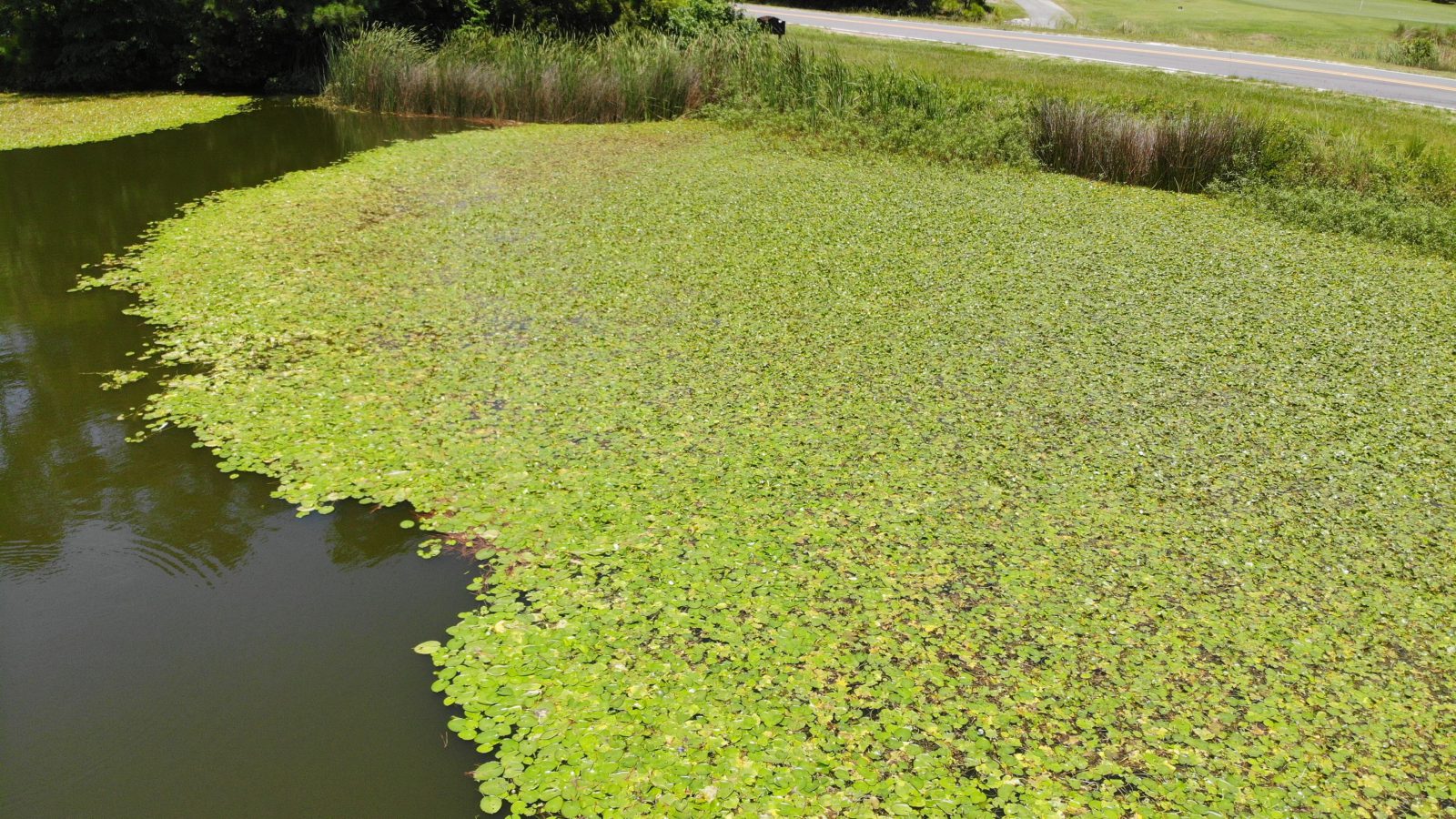
Site Description:
SOLitude Lake Management has been servicing this property for over ten years. Due to southeast Florida’s tropical climate and year-round growing season, many plants, both native and non-native, become invasive on land and water, requiring constant control methods. Aquatic vegetation (algae, Vallisneria, and hydrilla) was managed by repeated herbicide treatments in order to maintain proper water flow and lake/pond health.
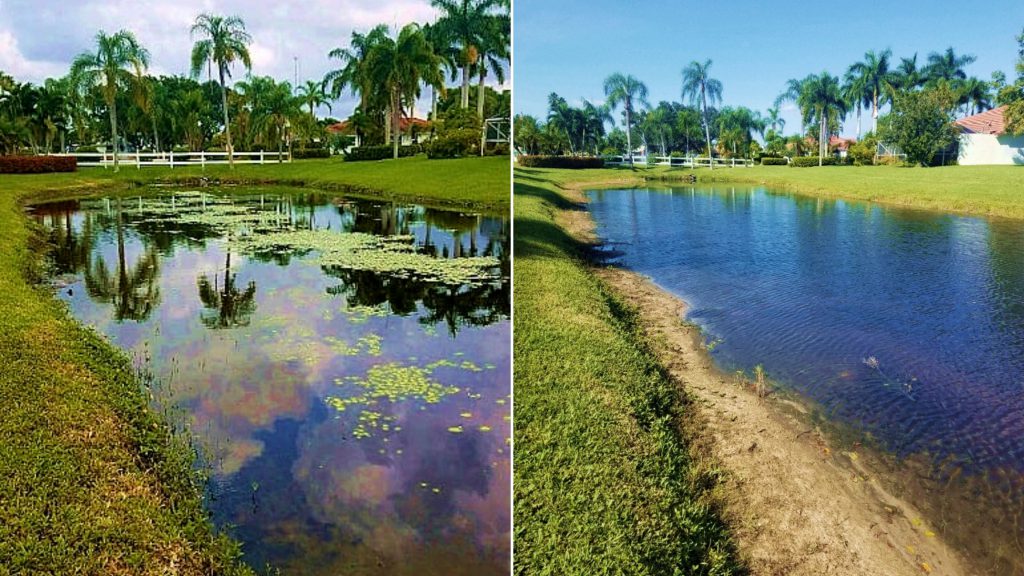
Location: Palm Beach, FL
This property is a collection of suburban residential homes surrounding a golf course located at the northern tip of the Everglades. Due to seasonal flooding in this region, land development requires stormwater collection and flood control systems mandated by several drainage district government entities. This property has a series of interconnected lakes and ponds to collect and move floodwaters into discharge canals that eventually lead out to the Atlantic Ocean. Water flows into the site from other areas, including agricultural lands to the west. The lakes and ponds at the property provide important habitats to migratory and wading bird populations.
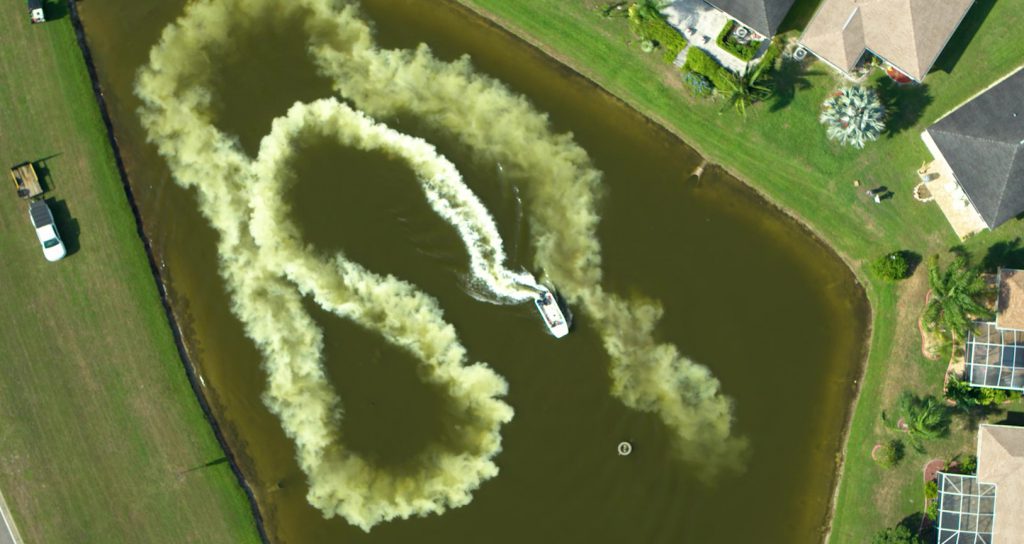
Scope Of Work:
ProcellaCOR was used to eradicate invasive floating heart in two ponds. ProcellaCOR is a new herbicide technology that can be used for the selective control of some of our nation’s most invasive and recurring aquatic weeds. Leveraging new mechanisms to specifically target the unique growth processes of these undesirable species, ProcellaCOR helps property owners achieve long-term control of the following aquatic plants without the need for costly re-application. The product’s premium low dosing features allow for a 100-1000x reduction (compared to other aquatic herbicides) in the active ingredient necessary to eradicate the invasive and noxious aquatic weeds responsible for degrading the health and use of waterbodies. These superior results are paired with a Reduced Risk classification by the EPA, meaning it can be applied to lakes and ponds without impacting the native plants you enjoy or interfering with recreation.
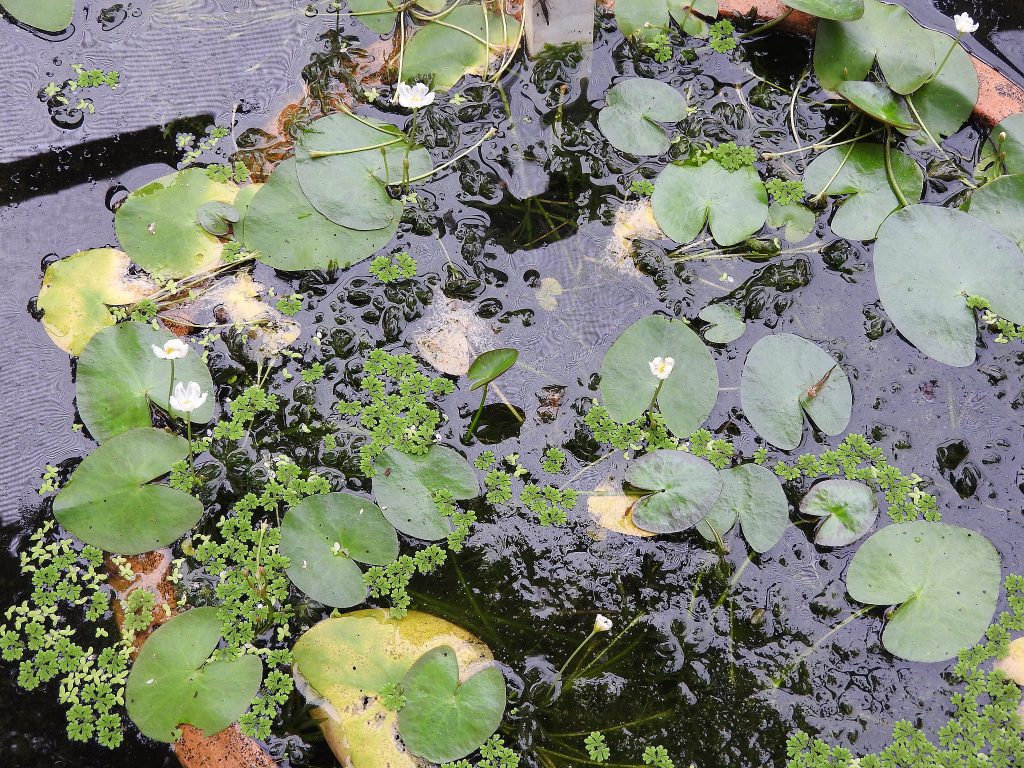
Project Description:
In 2017, project managers observed a new species of aquatic invasive – Nymphoides cristata, commonly called floating hearts – a CATEGORY I on the Florida Exotic Pest Plant Council’s (FLEPPC) 2017 List of Invasive Plant Species. Nymphoides have become established in South Florida surface waters after escaping from the ornamental plant trade. It has small heart-shaped leaves that float on the water’s surface while the roots grow into the hydrosoil. It is presumed that Nymphoides were introduced into the property by inflowing surface water from adjacent drainage canals.
Repeated attempts were made to control Nymphoides by carefully applying systemic herbicides that were already being used to treat other aquatics found on the property. The results of these treatments were unsuccessful. Next, a foliar contact herbicide was used to treat the plant on the water surface; however, it did nothing to the submersed portion, which continued growing.
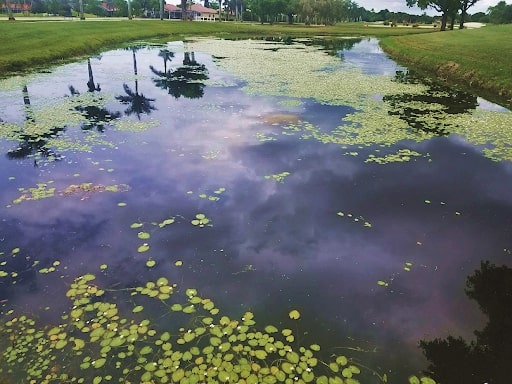
In 2018, a new solution called ProcellaCOR became available. SOLitude began a test study in two ponds on the property with Nymphoides where previous control had not been successful. This alternative solution has several useful features (environmental and cost-effective) that made it a good choice for this problematic aquatic plant: 1) Its unique formulation targets a hormone in certain plants, Nymphoides being one of those, without affecting other native aquatic plants. 2) Application only needs to be done in the areas where the plant is physically growing, not the entire pond.
The ponds selected on the property for this test study were chosen for their similar size, the amount of Nymphoides present in the water (60 – 70% coverage), and location. Pond A is located farthest away from any surface water canal inflow. Pond B is located closest (40 feet) to the inflow surface water canal from the west. Water from Pond A is used to irrigate residential lawns. Pond B is not used for irrigation.
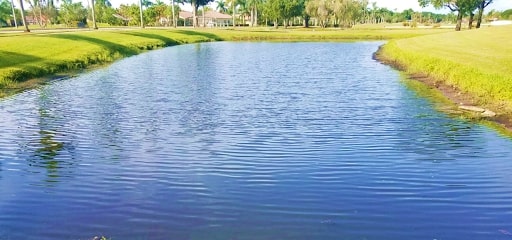
Efficacy was visible on plants within days of application, and complete control was established about three weeks later in both ponds. Regrowth of Nymphoides was not observed for approximately 8 months in Pond A and 10 months in Pond B. There were no incidents of issues using irrigation water from Pond A. Current treatment methods include the use of ProcellaCOR as needed to treat all waterbodies on the property with 100% control of Nymphoides.









